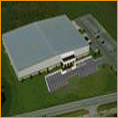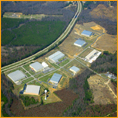2nd Quarter 2018 Hotline
Market Watch
by Joe A. Hollingsworth, Jr.
As it pertains to construction as an industry, for thousands of years, we have basically performed construction with materials that are largely from the earth such as clay, wood, iron ore, limestone, crude oil based materials, etc. Now, things are on the cusp of changing and changing very rapidly, and these will substantially affect industrial real estate. Composite materials are now becoming very common such as carbon fiber, plastics, and lab-produced finishes. Federal and state regulations have become so onerous and costly in the removal and processing of earth materials that it has forced many manufacturers to go to a more predictable and less costly methods to control outcomes by minimizing the use of earth materials. An elementary example is that we are now beginning to use concrete spoils or old concrete previously removed to crush it in lieu of gravel (that is often monopoly pricecontrolled), thus cutting the cost by half. However, a new concrete is now being developed with a bacteria in it that can last 200 years, and that bacteria can actually heal itself in case of a structural crack. Does it sound far-fetched? It’s already been proven and being tested! Additionally, concrete as it is presently formulated is estimated to produce 4% of all greenhouse gases (GHG omissions), but this new bacteria concrete actually becomes a consumer of said gases.
Another dramatic advance in construction would be utilizing the advances in carbon nanotubes that directly affect the strength to weight ratio of structural materials, thus allowing for tremendous increases in flexibility and strength per pound. This would dramatically decrease the cost of construction once these materials are commercially produced (Image bar joists at roughly half the size).
Artificial intelligence and robot builders are already being coupled together in laboratory test and trials – much as robotic surgery has been used in hospitals. Imagine the advances in precision and predictable outcomes with up to three times the production per man hour and how that will affect construction timelines and better use the existing labor pool!
As it applies to real estate developers and builders, we have been virtually stagnant in construction processes for years. These radical changes are about to disrupt everything we have known in construction practices, similar to how the smartphones with all their applications did to replace the old flip phones.



